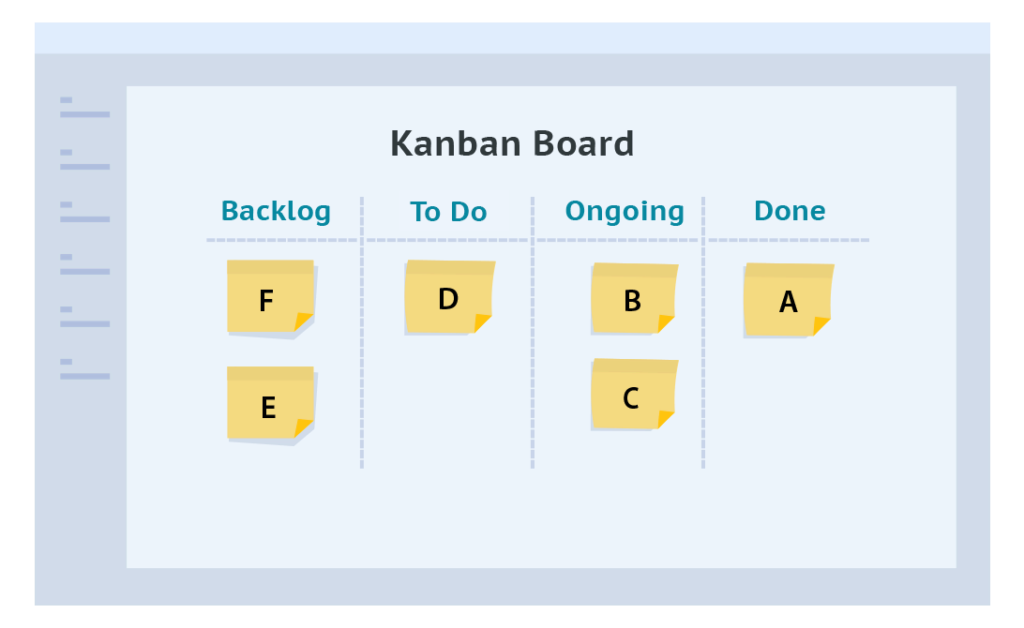Wait! Is Kanban RIGHT for you?

Kanban 101
Wait! Is Kanban RIGHT for you?
Before you click on that enticing “Free Trial” button and sign up for SwiftKanban, you might want to consider this. Kanban may not be the right tool for you! (Yes, even we can’t believe we are saying this!)
Kanban is a powerful visual management tool for a variety of business functions, from IT and software to product management, product design, marketing, HR, legal, and several others. Any function or work that has a workflow that can be visualized on a Kanban board as a series of steps is a potential candidate for using Kanban to manage it visually and effectively – AND over a period of time, improving it!
However, often, many people jump into “doing Kanban” (or using SwiftKanban) because they believe it is “simple” or “easy”. While Kanban is certainly “easy” to get started with, it has a lot to it that needs to be understood and adopted in a gradual manner, in order to truly benefit from it.
Let’s first get the easy ones out of the way.
Kanban (or SwiftKanban) is NOT for you if…
-
You are simply looking for a basic task management tool. When you want a simple way to manage your personal or team tasks and all you care about is that the tasks are identified (so they are not falling through the cracks) and whether they are done or not, then a simple checklist will be easier to use and manage. There are a variety of simple tools, such as the Tasks in Gmail and Outlook, or Notes or even a basic spreadsheet where you can list tasks that get identified and marked Done when they are completed
-
You are looking for a “traditional” Project Management tool – such as MS Project or similar – where you can define tasks, the dependencies between them and assign resources to the tasks, etc. These kinds of tools have long been associated with the “waterfall” method of managing projects which have long suffered from systemic failure due to a variety of reasons. As most knowledge-teams move to more “agile” ways of doing things, they are moving away from such traditional planning and execution project management tools. Kanban does not provide for a “planned vs. actual” project progress tracking, nor does it provide easy ways of tracking effort your people are spending on specific tasks (although it can be done).
-
You are looking to manage detailed aspects of your team’s work, such as hourly tracking of what they do and what free time they have available, so that they can do more work. More and more knowledge teams – Agile teams – are mature, self-organizing, cross-functional teams that (are expected to) know how to do their work and how to ensure effective and efficient utilization of their time. Ideally, you should not HAVE to manage your people where you feel the need to track their exact “free slots” in the course of a week so that you, or someone else, can assign them work during those slots. However, if you do, then Kanban (and SwiftKanban) is not for you. You are probably better off with a traditional project/ resource management tool that lets you do all that. (You’d be even more better off moving away from that way of managing your people, but that is a different topic altogether!)
-
You are looking for a tool to manage “Recurring Tasks”. This is a tricky one. Most of us have to deal with tracking and managing recurring tasks – such as meetings, calls, marketing tasks such as daily social media activity, or other such work. While a calendar tool gives you an easy way to define this kind of work on your calendars, Kanban (and SwiftKanban) is not really (at least yet) designed for that. So, while there are ways of working around it, it might be a bit of a struggle. You can try it out though – we do have the capability to integrate your calendar via Zapier..
-
You have a simple “To-Do – Doing – Done” workflow. A lot of Kanban related literature (including perhaps some of ours!) described Kanban boards with a basic workflow like that. However, the fundamental benefit of Kanban is in helping you identify bottlenecks in your processes. If your entire delivery or development process is encapsulated in the one mysterious “Doing” step, there’s no way a Kanban board will provide you insights such as what part of your work takes the longest, what kind of blockers impact each stage of your work, and what steps you can take to improve. You CAN start with such a workflow on a Kanban board. However, in order to benefit from Kanban, you will very quickly need to expand the “Doing” column to the various steps involved, including other intermediate done stages, in order to benefit from Kanban.
-
You are a “notepad”/ “keyboard shortcuts” kind of a person! Kanban boards are necessarily a drag-and-drop, mouse or touch-screen based interface, where you update and drag and drop cards from one column of the board to the next. If you like to create/ update a hundred tasks in seconds using the Tab and Return/ Enter keys of your keyboard, you might find a Kanban tool’s interaction a tad slow! You may be better off staying with that notepad or spreadsheet! There is a lot that has been said about the benefits of the tactile feel of a physical Kanban board as you collaborate with your team – and many tools, including SwiftKanban, try to replicate that with touch-screen interaction. However, if that leaves you cold, just admit it!
Kanban (and SwiftKanban) is RIGHT for you, if –
-
You want to improve key personal/ business metrics. Kanban helps you reduce your lead time to market, to deliver more and to give you and your teams a sense of accomplishment by completing work. It helps you and your organization set policies and prioritize the most critical initiatives and work that is important for you. It helps you and your organization do the right things at the right time. Most knowledge teams struggle with larger than manageable backlogs (list of things to do), unclear or vague priorities and uncertain/ uneven delivery performance. Kanban helps you improve your predictability – to your management, your customers and for your markets!
-
You have understood the Practices of Kanban and want to benefit from them. Kanban is NOT just putting up stickies on a wall – or a board – and moving them around. Kanban is about analyzing and designing your workflow system so you can use it to improve. It is about defining and using WIP limits, and establishing Pull, so you can reduce multitasking (yes, multitasking is bad for you!) and improve you flow and throughput. It is about defining and following explicit policies so that everyone, including your stakeholders, has clear expectations of how work will get done. It is about collaborative scientific experimentation to improve continuously. For more details, please see here.
-
You and your team/ organization have agreed on the Key Principles of Kanban – Kanban is an “evolutionary” non-disruptive method of improvement, an alternate path to enterprise agility. It encourages you to follow the 4 foundational principles
- Start from what you are doing now
- Agree to pursue incremental, evolutionary change
- Initially, respect current roles, responsibilities, and job-titles; and
- Encourage acts of leadership at all levels
-
You have identified a clear need for improvement. If everything is going well for you, why would you try something new? As they say, if it ain’t broke, don’t fix it! However, almost all teams and organizations have challenges they struggle with to eliminate and improve their (delivery) capability. If you are clear you (and your team) need to improve, then there’s almost no better way to do it than Kanban!
Visualize your workflow and manage your work in an Easy and Intuitive way.
Try our Enterprise Plan FREE for 30 days.






